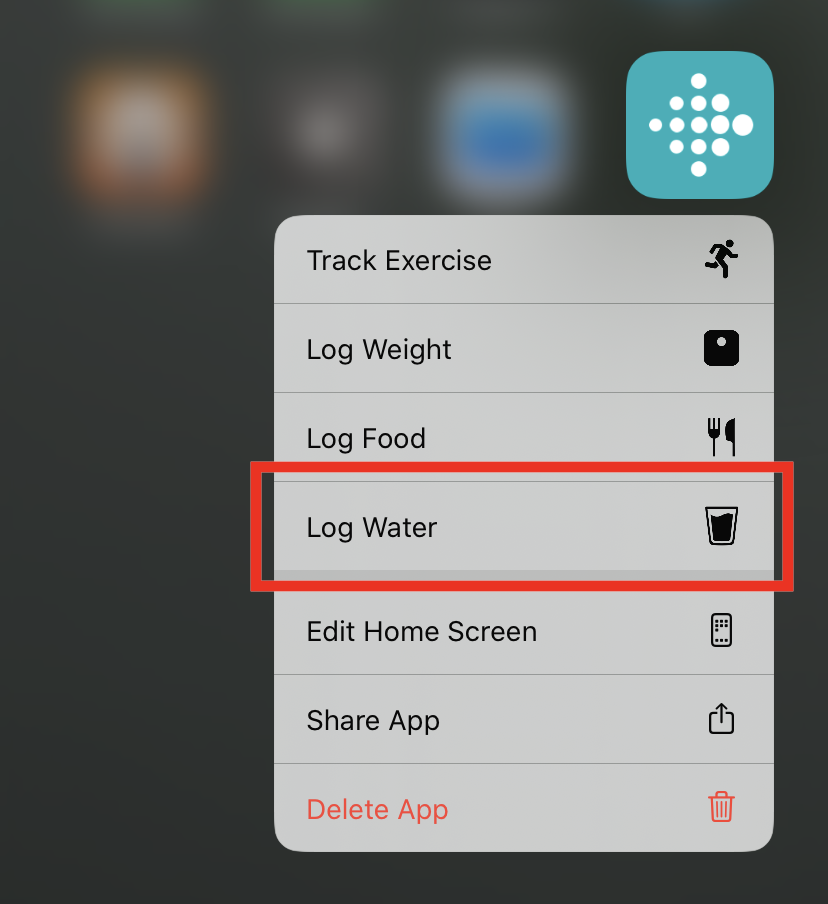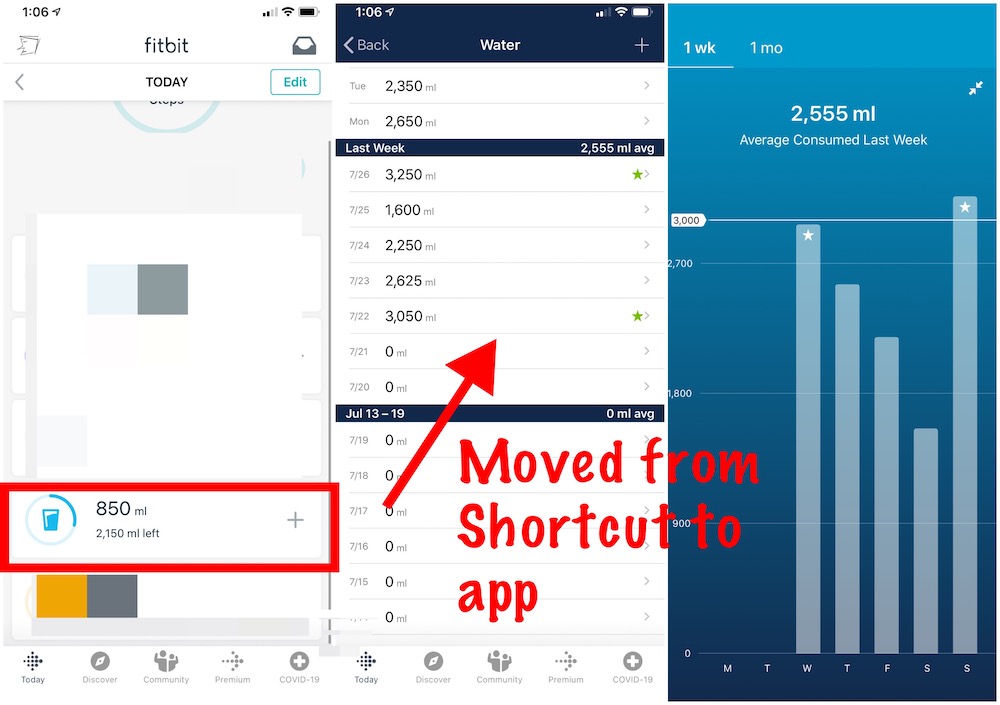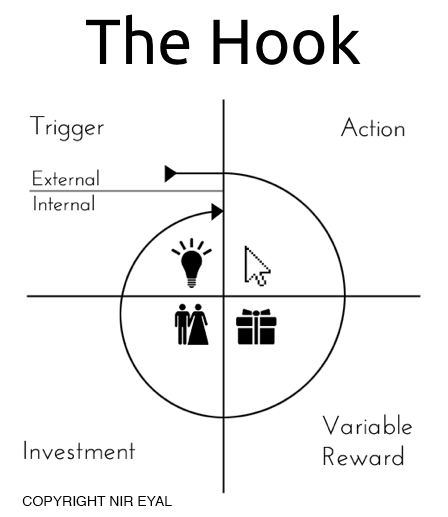We saw yesterday that I moved my Fitbit app to the home screen. This placement of the app is solely for me to log my water intake, available as a home screen quick action:

I have ended up using this despite me creating my own iOS Shortcut. Even though my shortcut is easy to launch, offers a menu of sizes instead of having to type an amount, and stores my intake and timestamp in an open plaintext format. This was puzzling to me.
When I reflected on this, I understood that the Ftibit app gave me a view of my progress towards the day’s goal (which I had set), and compared it with previous days’. My Shortcut logged data with less friction, but I have yet to build in any feedback about the day’s total intake.

That little gap, that failure to close the loop – led me to unconsciously gravitate towards something less elegant and more time-consuming. There’s a little bit of the Hooked framework at play here:

Trigger, Action and Investment are self-explanatory in this context. The reward here is not variable in the way checking for new email and for Instagram likes is, but it’s good to know how close I am to my daily intake goal – I’ve forgotten from the last time I logged my water intake and checked.
Understanding this has helped me be aware of how much I’m influenced by such signals. I’ll be more deliberate in building these into systems I create for myself, and to watch out for such patterns in systems I interact with, beyond obvious ones like badgers and notifications.
(Part 2 – another app in my routine that incorporates feedback and motivation)

2 replies on “Feedback and motivation, app edition – Part 1”
Nice! Have you read Atomic Habits? It has a similar framework but talks about that in context of building habits
Not yet. Have heard much about it. Including from someone on our group. Worth it? It so I’ll queue it up.